
Roots
The very strands that crown our heads hold whispers of epochs past, echoes of resilience, and silent declarations of being. For those whose lineage flows through the coil and kink of textured hair, the story woven into each strand is a profound testament to ancestral fortitude and cultural continuity. This exploration delves into how traditional styling practices did not simply adorn, but rather acted as living archives, meticulously preserving heritage and identity, particularly within Black and mixed-race communities. It is a journey into the elemental biology of the hair itself, viewed through the lens of deep history and ancestral wisdom, revealing how styling choices, tools, and rituals became vessels for cultural memory, communication, and survival across generations.
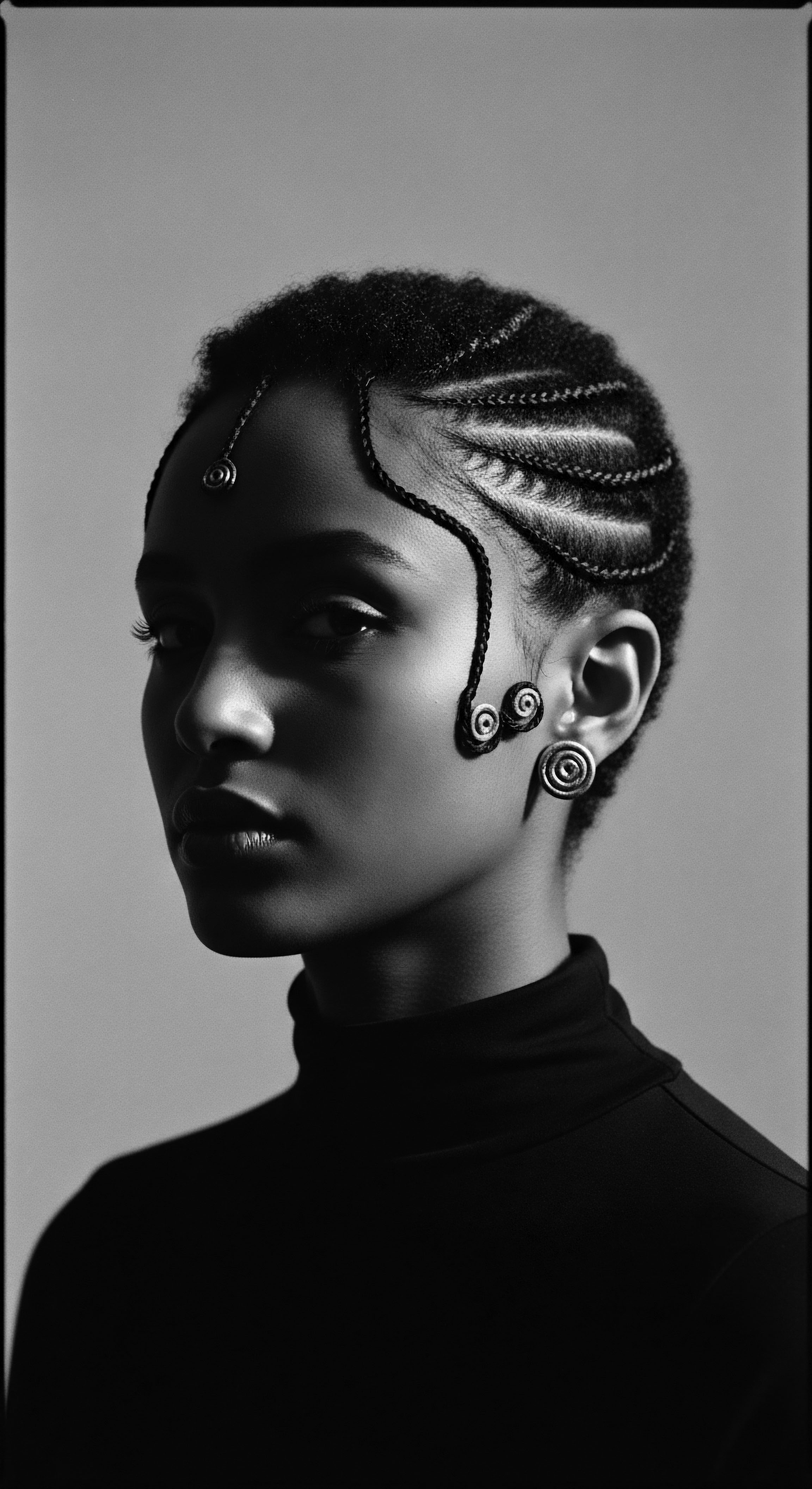
What is the Fundamental Structure of Textured Hair from a Heritage Perspective?
At its core, the science of textured hair reveals a marvel of natural adaptation. Each strand emerges from an oval or kidney-shaped follicle, which dictates its characteristic curl, wave, or coil. This contrasts with the round follicles that yield straight hair. The tighter the oval, the tighter the curl pattern tends to be.
Furthermore, the angle at which the hair emerges from the scalp significantly contributes to its shape, with angled or even perpendicular follicles contributing to tighter spirals. The arrangement of specific cortical cells within the hair shaft, forming distinct zones known as the paracortex and orthocortex, is central to curl creation. These structural distinctions grant textured hair its remarkable volume, spring, and capacity for diverse styling.
From an ancestral perspective, this unique biological design was not merely a biological fact; it was a canvas. Early African societies understood the inherent qualities of their hair, recognizing its capacity for intricate manipulation and its protective qualities in varied climates. The very architecture of the hair, therefore, became intrinsically linked to cultural practices, with styles crafted to work with, honor, and optimize its natural form. This biological reality, deeply embedded in the human experience, shaped communal aesthetics and practical care.
Hair, shaped by the distinct follicle, became a living canvas for ancestral wisdom and cultural expression.

How Did Ancient Classifications of Textured Hair Inform Community?
Long before modern classification systems, African societies possessed nuanced ways of understanding and interpreting hair types, often associating them with social standing, spiritual beliefs, and tribal affiliation. These were not rigid, scientific taxonomies in the contemporary sense, but rather a fluid language of appearance that conveyed a wealth of information. Hair served as a visual marker, a dynamic identifier. For instance, in pre-colonial Africa, a person’s hairstyle could reveal their age, marital status, social standing, religious beliefs, or even their geographic origin.
- Tribal Markers ❉ Different groups, such as the Yoruba or Himba, had distinct styles that immediately communicated one’s ethnic group.
- Life Stage Indicators ❉ Hairstyles often marked rites of passage, with young girls wearing specific braids, and married women adopting other styles.
- Social Status ❉ The intricacy, height, and adornment of a hairstyle could indicate wealth, royalty, or leadership.
This traditional understanding far surpasses simple aesthetic preference. It demonstrates a deep societal awareness of hair’s communicative power, where every coil and part held meaning, acting as a nonverbal language within communities. These ancient classification systems were not about categorization for its own sake, but about reflecting and reinforcing social order, cultural values, and individual place within the collective.
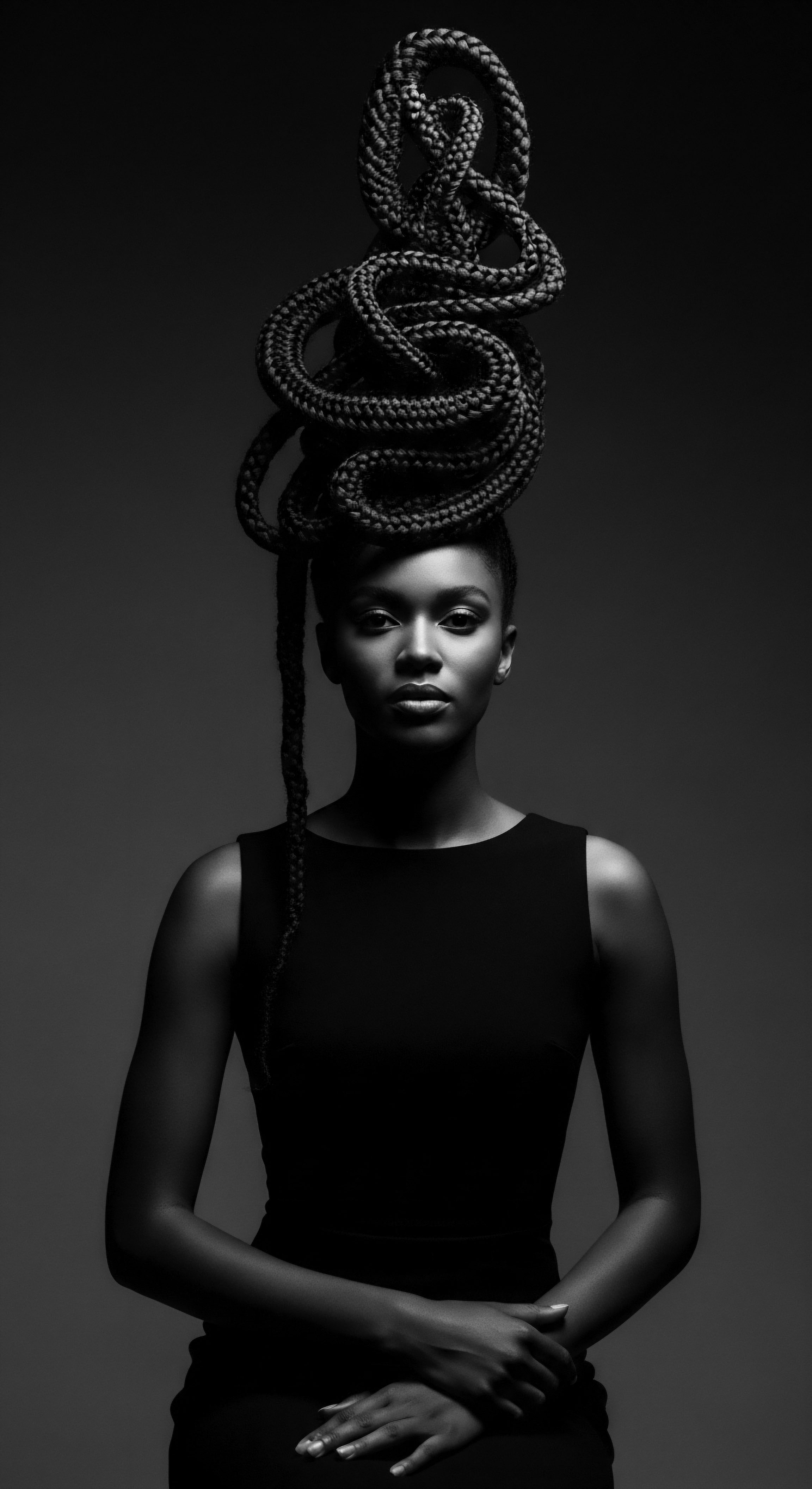
What Lexicon Emerged from Traditional Textured Hair Practices?
The language we use to describe textured hair today often has roots in these traditional practices, though sometimes distorted by colonial influences. Terms like “cornrows,” for instance, while now widely recognized, emerged in colonial America, named after the agricultural fields where enslaved people were forced to labor. Despite this fraught origin, the underlying practice traces back over 5000 years in African culture, where these tightly braided rows held profound social and symbolic weight.
Traditional lexicon included specific names for tools, styling techniques, and even the appearance of healthy hair. While many specific ancient terms may not have direct English translations or vary widely across hundreds of African languages, their essence is preserved in the practices themselves. The act of communal hair care, for example, known in many African cultures, represents a lexicon of care that extends beyond mere words, speaking through touch, shared stories, and generational instruction. The very process of braiding was, and still is, a social ritual, a time for strengthening bonds and passing down cultural knowledge.
| Historical African Perspective Indicated tribal affiliation, age, marital status, social rank, and spiritual beliefs. |
| Modern Scientific Classification Categorizes hair based on curl pattern (straight, wavy, curly, coily) and diameter (fine, medium, coarse). |
| Historical African Perspective Hair was seen as a spiritual connection, closest to the divine. |
| Modern Scientific Classification Focuses on the biological mechanisms ❉ follicle shape, disulfide bonds, and protein distribution. |
| Historical African Perspective A living canvas for communication and storytelling within a community. |
| Modern Scientific Classification Primarily descriptive for cosmetic and dermatological application, sometimes lacks cultural nuance. |
| Historical African Perspective The deep cultural meaning embedded in historical African hair classification persists, reminding us that hair is more than biology; it is a profound marker of heritage. |
These practices ensured that knowledge of textured hair, its care, and its cultural significance were transmitted. The terms, whether spoken or unspoken, form a lexicon of ancestral understanding.
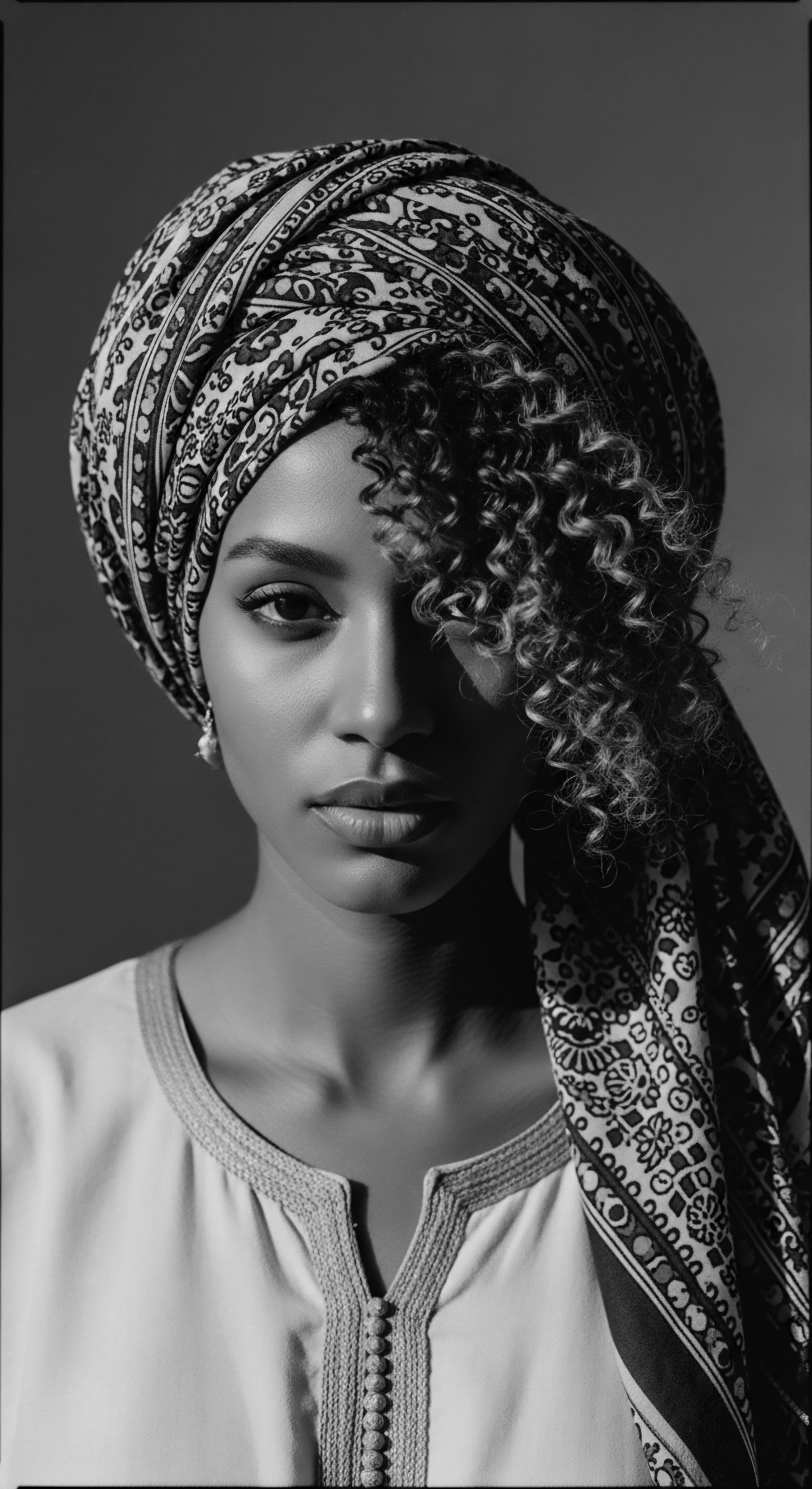
Ritual
The very act of tending to textured hair transcended simple grooming; it was, and often remains, a sacred ritual. These practices, passed through countless hands across generations, shaped not only outward appearance but also the internal landscape of identity and belonging. The careful parting, the rhythmic braiding, the application of natural ingredients – each motion carried the weight of tradition, an unspoken dialogue with those who came before. Traditional styling practices, then, served as powerful conduits for cultural legacy, embodying a tenderness toward self and community, rooted deeply in ancestral wisdom.
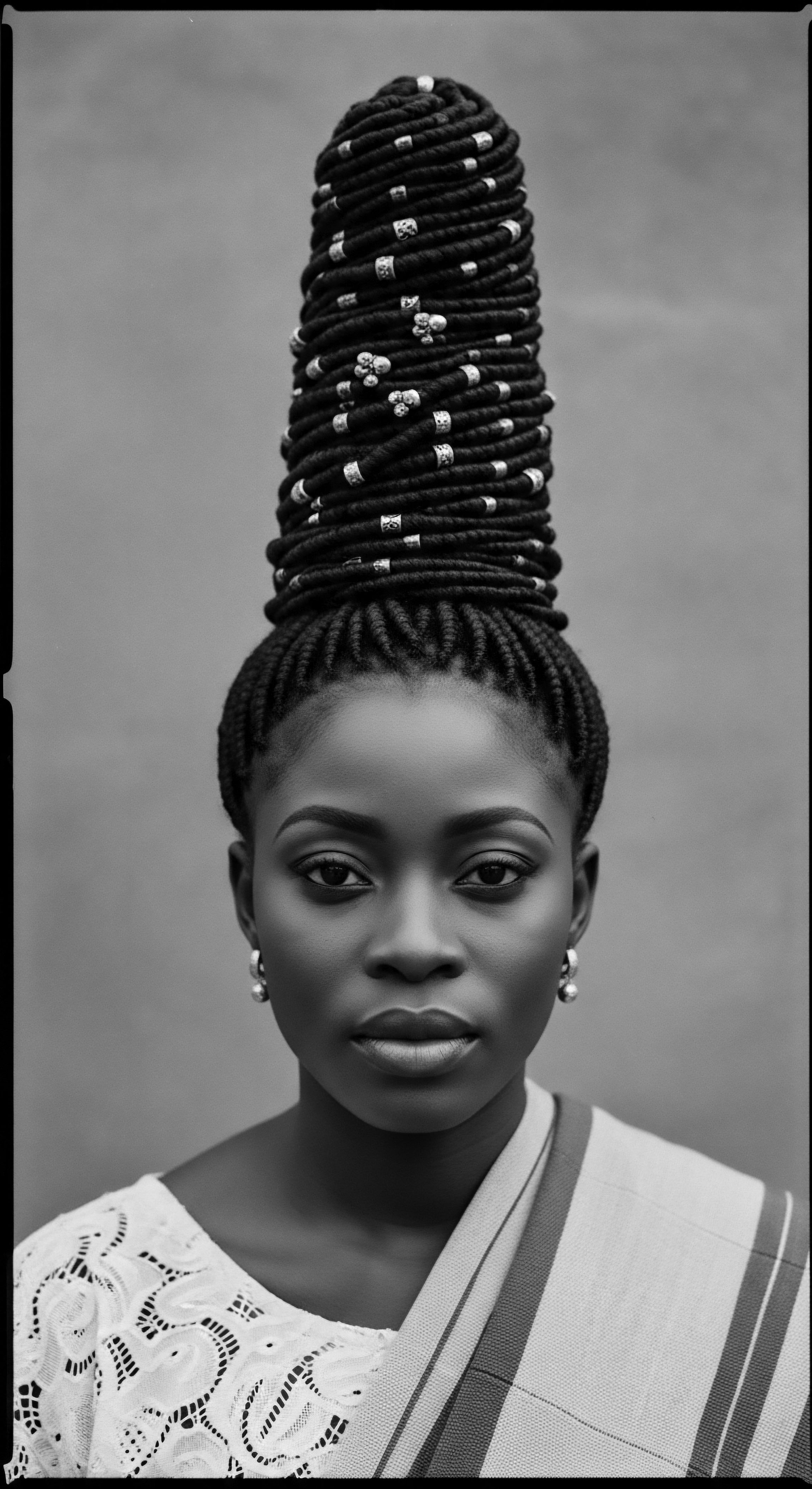
How Did Traditional Styling Techniques Become Cultural Expressions?
Traditional styling techniques, far from being fleeting trends, formed a core part of cultural expression and communal life across African societies. The diversity of these styles reflected the rich tapestry of ethnic groups, each with its unique patterns and meanings. For instance, braids , twists, and locs were not merely aesthetic choices; they were forms of communication, capable of conveying marital status, age, social rank, and even religious beliefs. The intricacies of styles, the number of braids, their placement, and the adornments used communicated messages about personal experiences or life stages.
Consider the Fulani braids of West Africa, with their characteristic center part and braids that hang forward, often adorned with cowrie shells or beads. These styles speak to a specific cultural heritage, representing an enduring connection to a lineage that predates colonial encounters. Similarly, the Himba tribe in Namibia traditionally coats their dreadlocked styles with red ochre paste, a practice that signifies their bond with the earth and their ancestors. These are not static styles but living forms, adapting yet retaining their core meaning.
During times of immense hardship, particularly during the transatlantic slave trade, these styling practices took on a heightened significance. Stripped of almost all cultural markers, enslaved Africans held fast to their hair traditions as a powerful act of resistance. Cornrows, in particular, were used to transfer and create maps for escape routes, with specific patterns encoding directions and meeting points. This covert communication, woven into the hair itself, saved lives and preserved the ingenuity of a people determined to defy their dehumanization.
Cornrows, intricate maps to freedom, whisper tales of resistance and ancestral ingenuity.
These traditional practices underscored a resilience, a quiet strength that resisted erasure. The continuation of braiding, twisting, and locking served as a profound testament to an unyielding cultural identity in the face of forced assimilation.
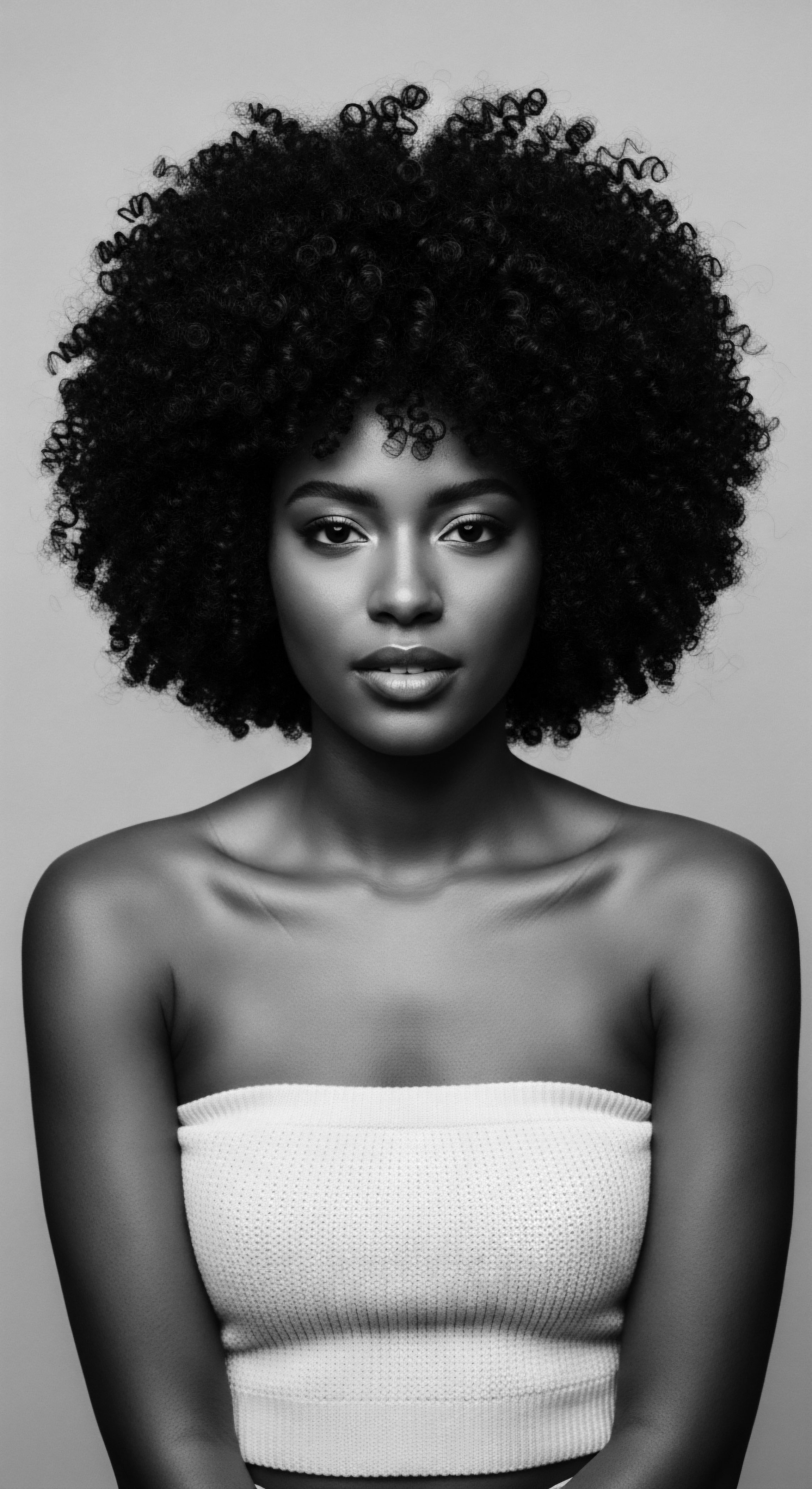
What Tools and Ingredients Were Central to Ancestral Hair Care?
The tools and ingredients used in traditional textured hair care were deeply connected to the natural environment and ancestral knowledge. Long before the advent of industrial products, communities relied on local botanicals and materials, understanding their properties through generations of trial and observation. These were not just instruments; they were extensions of a holistic approach to wellbeing.
Common ancestral tools and ingredients included:
- Combs and Picks ❉ Often fashioned from wood, bone, or even repurposed animal horn, these tools were designed to navigate the unique coils of textured hair, minimizing breakage. The Asante people of Ghana, for example, assigned specific meanings to aesthetic motifs on their combs, embedding cultural symbolism even in everyday objects.
- Natural Oils and Butters ❉ Ingredients like shea butter , coconut oil , palm oil , and aloe vera were staples, used for their moisturizing, protective, and healing properties. These were applied to nourish the scalp, condition the hair, and provide a protective barrier against environmental elements. The use of such ingredients speaks to an ecological wisdom, an understanding of the earth’s bounty and its application for human health.
- Plant-Based Washes and Rinses ❉ Various plant extracts, barks, and leaves were utilized for cleansing and conditioning the hair, often providing mild, nourishing washes that respected the hair’s natural balance. The specific plants varied by region, reflecting the diverse botanical knowledge held by different communities.
The preparation and application of these ingredients were often part of communal rites, transforming hair care into a shared experience that reinforced social bonds. The intimate act of mothers, sisters, and friends styling each other’s hair created spaces for storytelling, sharing wisdom, and strengthening familial ties.
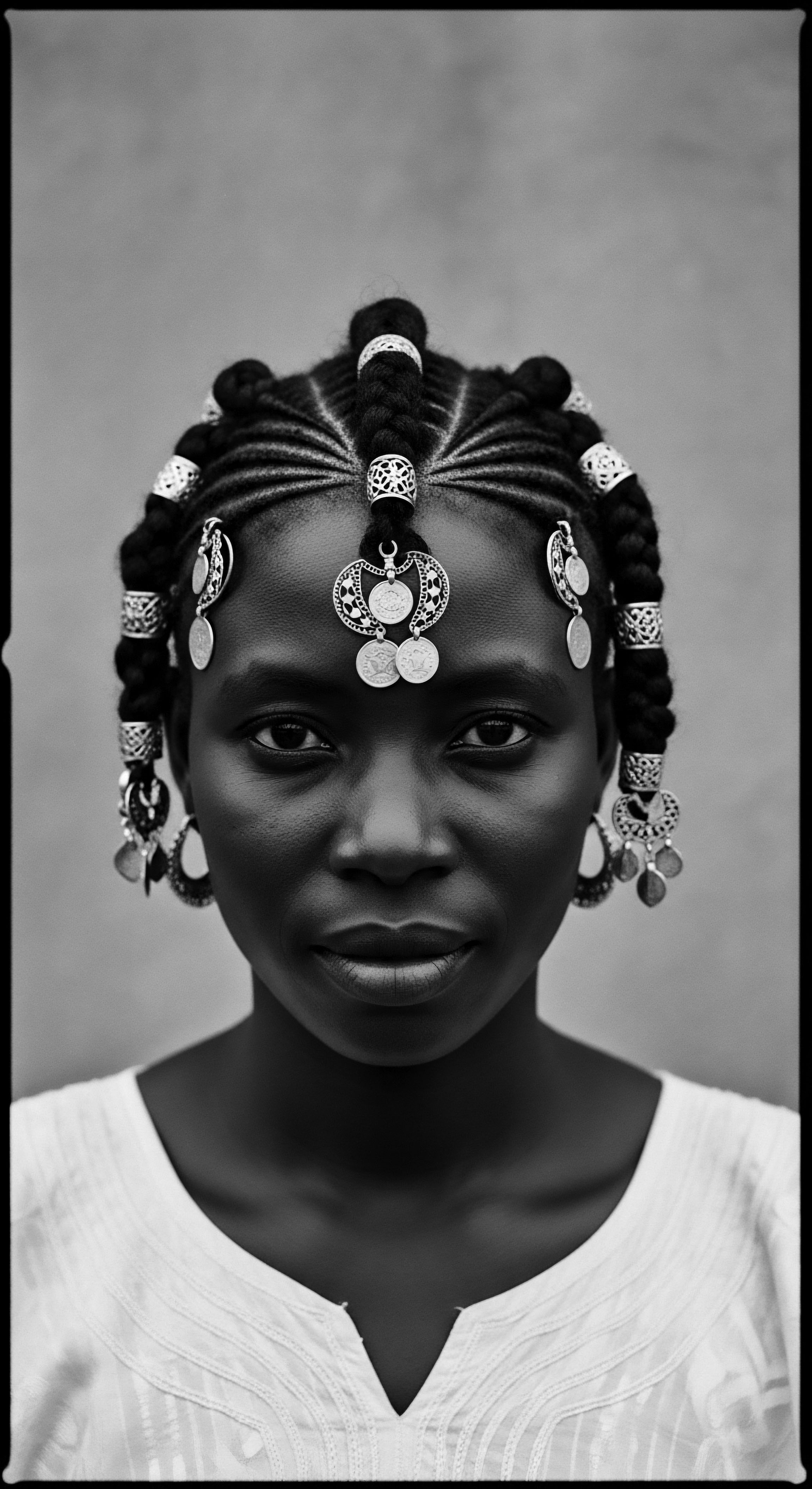
How Did Transformations of Appearance Echo Cultural Shifts?
The transformation of appearance through hair styling often mirrored larger cultural shifts and historical realities. During the era of enslavement, when traditional tools and methods were largely stripped away, individuals found ingenious ways to adapt. As mentioned, cornrows concealed rice seeds and gold, becoming a lifeline for survival and a symbol of covert resistance. This adaptation spoke to a powerful psychological shift, where hair became a means of defying oppression and asserting dignity.
In later periods, particularly during the Jim Crow era and beyond, societal pressures compelled many Black women to straighten their hair to conform to Eurocentric beauty standards. The advent of the hot comb and chemical relaxers offered methods to achieve this straightened look, often under immense social and economic pressure. While these practices were sometimes a means of survival in a discriminatory society, they also represented a forced disassociation from ancestral heritage for many.
The Civil Rights Movement of the 1960s sparked a profound cultural renaissance, where the Afro hairstyle became a potent symbol of defiance, pride, and self-affirmation. This embrace of natural hair was a powerful declaration of “Black is Beautiful,” rejecting imposed beauty norms and reconnecting with African roots. It marked a collective psychological shift, reclaiming visible identity as a form of political statement and cultural pride. This period demonstrates how hair transformation can reflect profound social and political awakenings.

Relay
The legacy of traditional styling practices continues to ripple through time, connecting the past with the present and informing visions of the future. The enduring wisdom held within each coil and kink is not static; it is a living, breathing archive, constantly in dialogue with contemporary understanding and scientific discovery. This section explores how the profound knowledge embodied in ancestral hair traditions persists, how modern approaches sometimes validate long-standing practices, and how this heritage continues to shape individual and collective narratives, building a bridge between elemental biology and living culture.

How Does Ancestral Wisdom Inform Modern Hair Regimens?
Ancestral wisdom provides a deep well of knowledge that shapes personalized textured hair regimens today. The emphasis on gentle manipulation, moisture retention, and the use of natural ingredients, deeply rooted in historical African practices, remains highly relevant. Modern science often validates the efficacy of these time-honored methods. For instance, the use of shea butter and various natural oils for hair nourishment, a practice dating back centuries in African communities, is now supported by scientific understanding of their emollient and sealing properties, which are particularly beneficial for retaining moisture in hair that is prone to dryness due to its coiled structure.
The tradition of protective styling, too, has deep ancestral roots. Styles such as braids, twists, and cornrows , which safeguarded hair from environmental damage and reduced manipulation, were commonplace across Africa. These styles continue to be staples in modern regimens for their ability to promote length retention and minimize breakage. The knowledge that low-manipulation styles lead to healthier hair is a direct inheritance from practices developed long ago, before the advent of chemical processing or heat tools.
The very concept of hair as something to be nurtured, rather than tamed or altered, resonates with ancestral philosophies. This perspective encourages a holistic view of hair health, recognizing its connection to overall wellbeing, diet, and even spiritual harmony.

What is the Significance of Nighttime Rituals in Preserving Hair Heritage?
Nighttime hair care rituals, particularly the use of head coverings, stand as a testament to the quiet, enduring practices that preserve hair heritage. The satin bonnet or silk scarf , now a commonplace item for many with textured hair, carries a historical lineage linked to practicality and dignity. In various African cultures, headwraps and coverings served multiple purposes, from indicating social status to protecting elaborate hairstyles from dust and damage. These were not merely fashion statements; they were functional elements of daily life.
During the transatlantic slave trade, head coverings also became a means of preserving modesty and a subtle expression of cultural identity when other forms of adornment were forcibly removed. The practical benefit of protecting hair from tangles, breakage, and moisture loss during sleep became intertwined with this larger narrative of resilience and care. Modern scientific understanding of hair friction and moisture retention on various fabrics merely underscores the wisdom embedded in these long-standing practices.
Sleeping on a satin or silk surface reduces friction, which minimizes breakage and preserves the hair’s natural moisture, especially for fragile textured strands. This simple act connects contemporary care to centuries of ancestral care and the preservation of hair health.
| Ancestral Tool/Practice Wooden/Bone Combs for Detangling |
| Modern Application/Equivalent Wide-tooth Combs, Detangling Brushes (designed for textured hair) |
| Ancestral Tool/Practice Shea Butter, Coconut Oil for Moisture |
| Modern Application/Equivalent Deep Conditioners, Leave-in Conditioners with natural oils |
| Ancestral Tool/Practice Communal Braiding Sessions |
| Modern Application/Equivalent Salon Braiding Services, Natural Hair Meetups, Online Tutorials sharing techniques |
| Ancestral Tool/Practice The evolution of hair care tools reflects a continuous effort to nourish and style textured hair, drawing from foundational ancestral knowledge. |
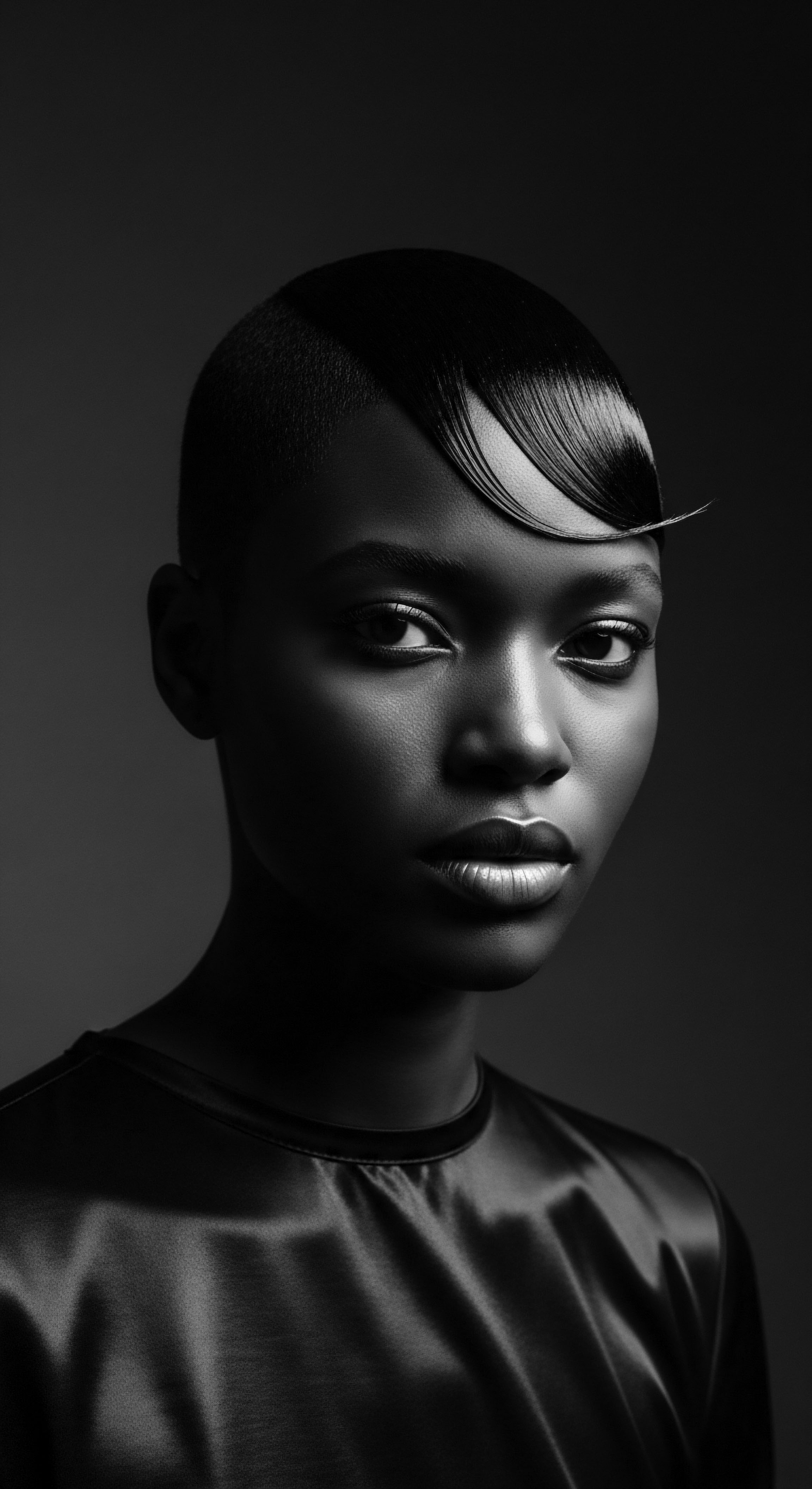
How Do Traditional Ingredients Meet Modern Hair Needs?
Traditional ingredients, deeply rooted in ethnobotany, continue to provide solutions for modern textured hair needs, demonstrating a timeless efficacy that spans generations. These natural components, used for centuries, offer properties that contemporary hair science now isolates and synthesizes.
Consider Chebe powder , originating from Chad. While not widely cited in the provided search results directly for its historical scientific backing, its traditional use involves creating a paste with oils and applying it to hair to promote length retention and strength by sealing moisture into the strands. This traditional practice points to an understanding of how to reduce breakage in hair, a concern still central to textured hair care today.
The empirical success seen in communities where Chebe has been used for generations offers a powerful case study in the efficacy of ancestral methods. Its application often involves meticulous, ritualistic processes that reinforce the cultural significance alongside the physical benefits.
Traditional ingredients and their applications serve as reminders that comprehensive hair care solutions often existed within indigenous communities long before commercial products became ubiquitous. Their continued use by many individuals today links directly to a desire to honor heritage, seek authentic solutions, and connect with ancestral wisdom regarding wellness. This reconnection is not simply nostalgic; it is a pragmatic embrace of practices that have withstood the test of time, proving their value across diverse environments and social contexts.
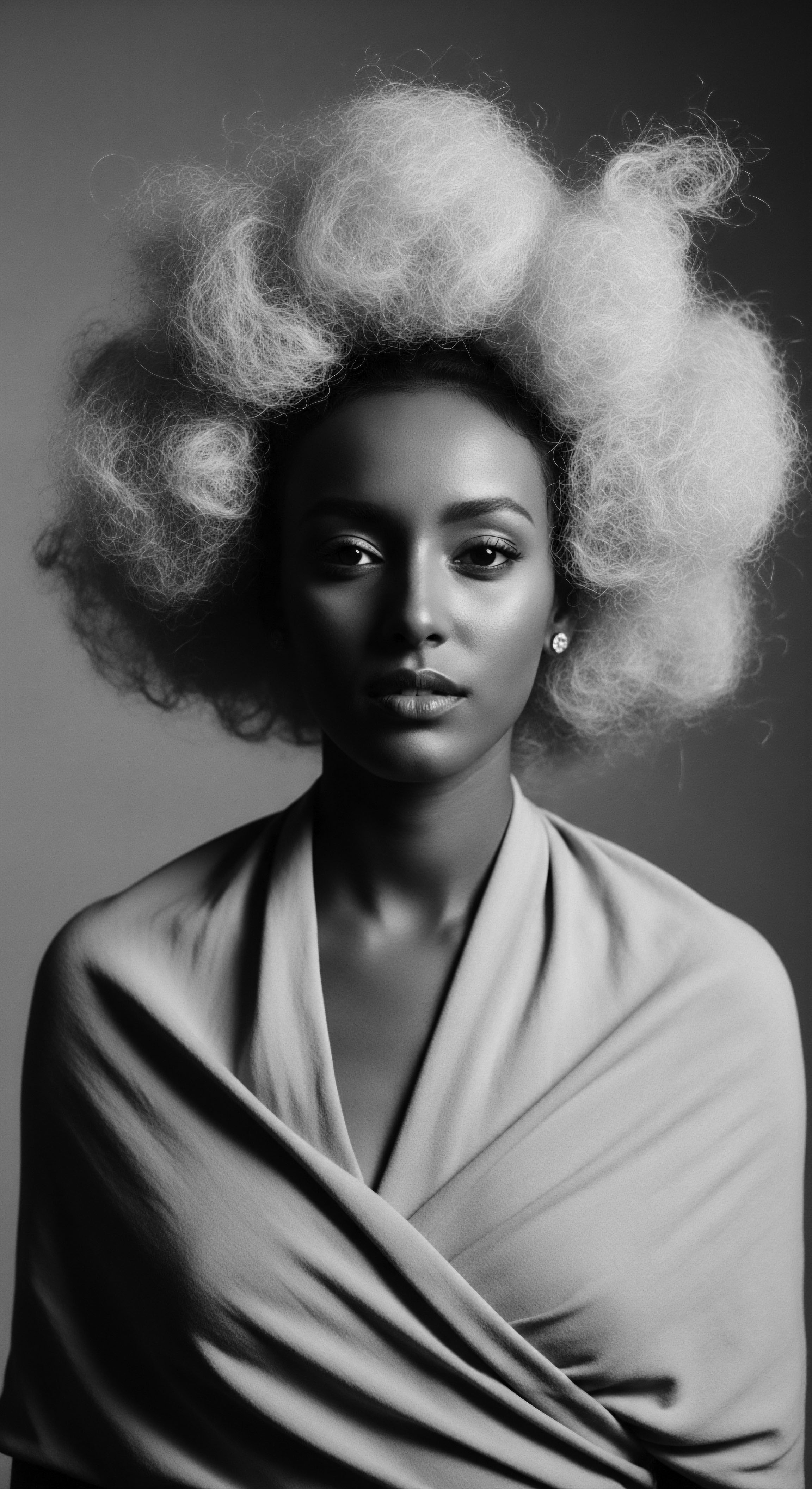
Reflection
The journey through textured hair heritage reveals a profound truth ❉ traditional styling practices were never mere aesthetic choices. They were deliberate acts of preservation, enduring declarations of identity, and quiet, yet potent, forms of communication and resistance. From the very structure of the hair, dictating its potential as a canvas, to the hands that meticulously crafted each braid, twist, or loc, a continuous thread of ancestral wisdom guides the path. The story of textured hair is one of remarkable resilience, a living archive passed down through generations, where every strand holds a memory, a triumph, and a connection to a deep, unyielding legacy.
This understanding beckons us to look beyond the surface, recognizing hair as a powerful cultural artifact, a visible manifestation of history, and an intimate link to collective identity. The communal rituals of hair care, the ingenuity behind traditional tools and ingredients, and the symbolic language embedded in each style collectively speak to an inheritance of self-knowledge and dignity. Roothea’s ‘Soul of a Strand’ ethos finds its living expression within this enduring narrative, reminding us that the care we give to our textured hair is not just about physical wellbeing; it is an act of honoring lineage, tending to the roots of identity, and nourishing a heritage that refuses to be silenced or erased. It is a celebration of the boundless spirit that continues to define and redefine beauty through the echoes of ancient wisdom.

References
- Byrd, Ayana, and Lori L. Tharps. Hair Story ❉ Untangling the Roots of Black Hair in America. St. Martin’s Griffin, 2001.
- Dabiri, Emma. Twisted ❉ The Tangled History of Black Hair Culture. Harper Perennial, 2020.
- Ellington, Tameka. Textures ❉ The History and Art of Black Hair. Schiffer, 2017.
- Johnson, Carolyn, and Lisa Bankhead. “Hair Story ❉ The Psychology of Black Women’s Hair.” Journal of Black Studies, vol. 45, no. 5, 2014, pp. 452-476.
- Okonkwo, Adetutu Omotoso. “The Significance of Hair in Ancient African Civilizations.” Journal of Pan African Studies, vol. 11, no. 3, 2018, pp. 1-15.
- Setlaelo, Sarah. “Black Women’s Hair Consciousness and the Politics of Being.” Eidos A Journal for Philosophy of Culture, vol. 6, no. 3, 2022, pp. 24-43.
- Thompson, Cheryl. Beauty in a Box ❉ Detangling the Roots of Canada’s Black Beauty Culture. Wilfrid Laurier University Press, 2019.
- Davis-Sivasothy, Audrey. The Science of Black Hair ❉ A Comprehensive Guide to Textured Hair Care. Sivasothy Publishing, 2011.
- Banks, Ingrid. Hair Matters ❉ Beauty, Power, and Black Women’s Consciousness. New York University Press, 22000.
